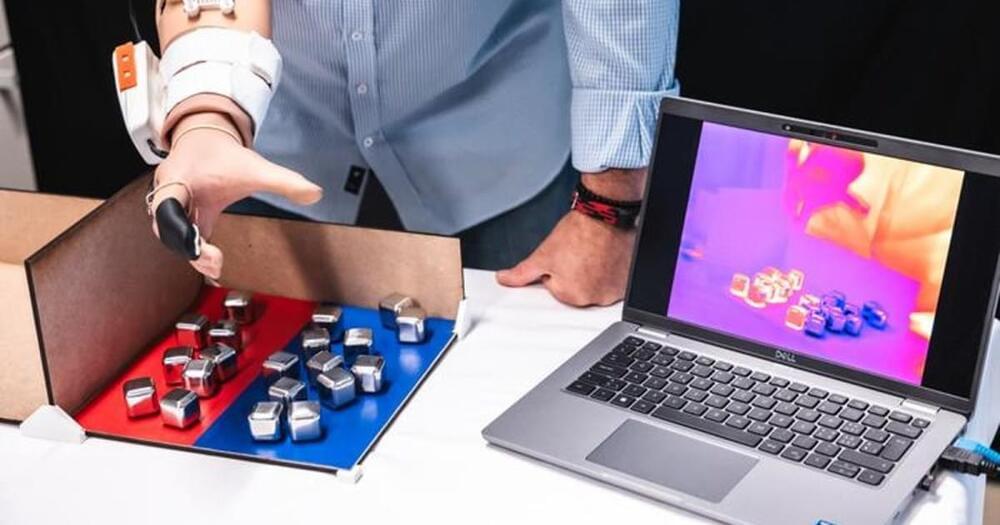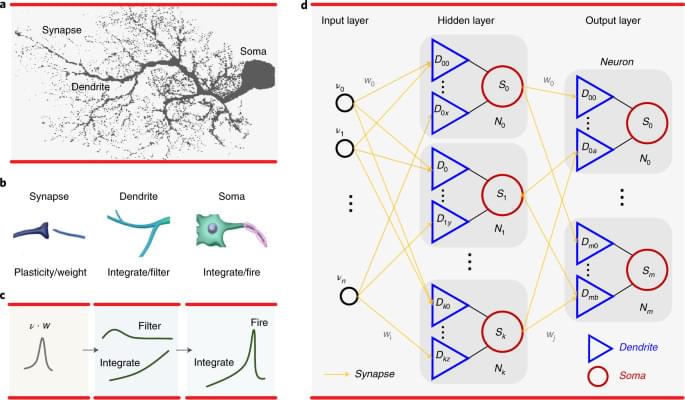A new tool has been developed to detect skin cancer; it utilizes a biosensor that can identify small changes in the characteristics of cells. | Clinical And Molecular Dx.
Get the latest international news and world events from around the world.

NASA-built tech lets paralyzed people communicate with eye movements
Envision a game-changing technology that grants the power of expression to those facing speech challenges.
An innovative solution has emerged thanks to an incredible collaboration between NASA’s Jet Propulsion Laboratory and Eyegaze Inc.
They have created Eyegaze Edge, an eye-driven communication device.



Unearthing Mars’ Watery Past: Insights from Groundwater Recharge Dynamics
“The fact that the groundwater isn’t as big of a process could mean that other things are,” said Eric Hiatt. “It might magnify the importance of runoff, or it could mean that it just didn’t rain as much on Mars. But it’s just fundamentally different from how we think about [water] on Earth.”
How much water on ancient Mars fell into aquifers to refill groundwater? This is what a recent study published in Icarus hopes to address as a team of international researchers led by The University of Texas at Austin (UTA) used computer models to calculate groundwater recharge rates in the southern highlands of ancient Mars. This study holds the potential to help scientists better understand the amount of water that potentially existed on ancient Mars and what this could mean for finding ancient life on the Red Planet.
For the study, the researchers used a combination of previously used and new computer modeling techniques to estimate how much groundwater recharge occurred in the Martian southern highlands, since most of the liquid water that existed on Mars billions of years ago resided in a vast ocean in the northern lowlands. In the end, the researchers found the aquifers in the southern highlands on Mars experienced an average groundwater recharge of only 0.03 millimeters (0.001 inches) per year. For context, the Trinity and Edwards-Trinity Plateau aquifers that are responsible for providing water for the city of San Antonio range between 2.5 to 50 millimeters (0.1 inches to 2 inches) per year, or between 80 and 1,600 times that of the Martian aquifers.

Sagittarius A*: Spinning Black Hole Shapes Spacetime into Football
“A spinning black hole is like a rocket on the launch pad,” said Dr. Biny Sebastian. “Once material gets close enough, it’s like someone has fueled the rocket and hit the ‘launch’ button.”
The center of our Milky Way Galaxy is exhibiting spinning behavior while warping the spacetime environment, according to a recent study published in the Monthly Notices of the Royal Astronomical Society. A team of international researchers led by Penn State University investigated the spinning patterns of the supermassive black hole at the center of the Milky Way, Sagittarius A* (Sgr A•, which is located approximately 26,000 light-years from Earth, and holds the potential to help astrophysicists better understand the behavior of black holes throughout the cosmos.
“A spinning black hole is like a rocket on the launch pad,” said Dr. Biny Sebastian, who is a researcher in the Department of Physics & Astronomy at the University of Manitoba and a co-author on the study. “Once material gets close enough, it’s like someone has fueled the rocket and hit the ‘launch’ button.”
For the study, the researchers analyzed data sets from six archival observations obtained by the Chandra X-Ray Observatory, which has been using its powerful instruments to study the cosmos since its launch in July 1999. Using a method that was developed in a 2019 study by the current study’s lead author, Dr. Ruth Daly, the researchers determined that Sagittarius A* was spinning in such a manner that it is warping the surrounding spacetime environment into a football shape, which becomes flatter as the spin increases and is driven by the surrounding matter and the black hole’s magnetic field. The researchers concluded that if the amount of this matter and magnetic field’s strength change in the future, this could alter the amount of energy the spin exerts out into space.

The Zombie Star That Could Solve the Mystery of the Universe’s Strongest Magnets
Magnetars are the strongest magnets in the universe. These super-dense dead stars with ultra-strong magnetic fields can be found all over our galaxy but astronomers don’t know exactly how they form.
Now, using multiple telescopes around the world, including European Southern Observatory (ESO) facilities, researchers have uncovered a living star that is likely to become a magnetar. This finding marks the discovery of a new type of astronomical object—massive magnetic helium stars—and sheds light on the origin of magnetars.
Despite having been observed for over 100 years, the enigmatic nature of the star HD 45,166 could not be easily explained by conventional models, and little was known about it beyond the fact that it is one of a pair of stars, is rich in helium and is a few times more massive than our sun.

24 Best Longevity Conferences and Events for 2024
For this long overdue update of top longevity conferences we’ve removed 5 old events no longer happening and added a whopping 12 new ones!
We’ve put together the most up-to-date list of longevity conferences where you can learn about life-extension research in-person and online.
